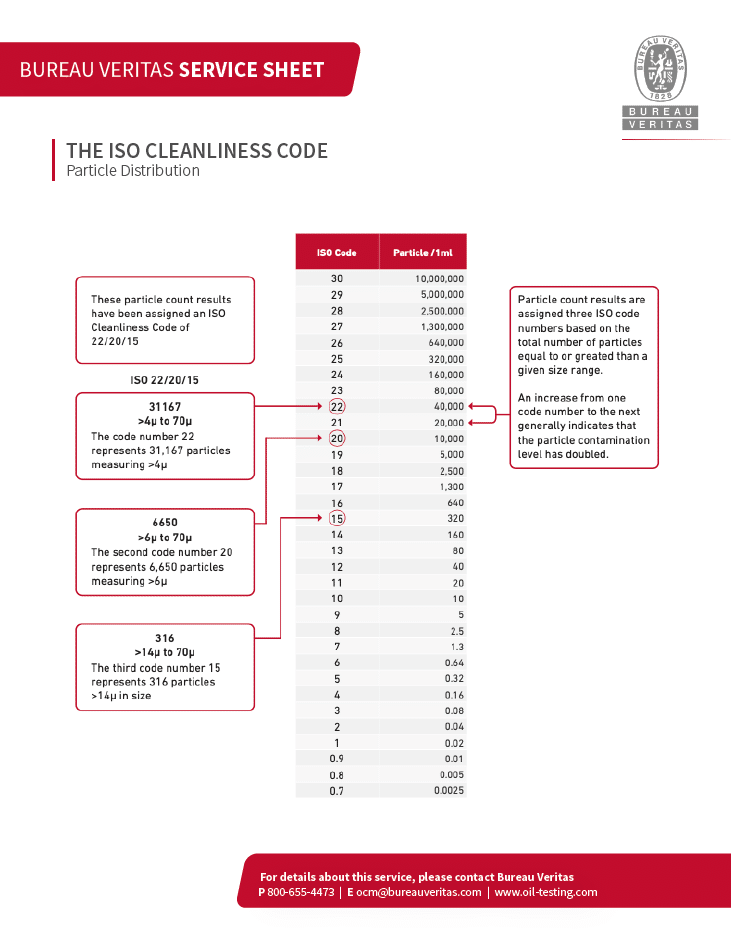Particle counting is becoming more and more of a standard test in many applications. Considering the changes in the use of hydrostatic and hydraulic systems, fluid cleanliness has become vital to meet the components engineered service life. Service life outside of the design and engineering aspect comes down to keeping the fluid in service cool, clean and dry.
With current systems able to produce 3,000 or more operating pressures, monitoring particulate contaminant levels is just a given. Piston pumps and motors must have clean fluid to keep wear at a minimum as well as keeping servo valves and controls clear of particulate contamination. Electronic control systems are used for smooth and more productive use of the higher pressures in the hydraulic systems. Clean fluid is imperative to maintain the proper operability of these systems.
The most cost effective way to determine if the fluid in service is sufficiently clean is through the use of particle count test data. There are several ways to obtain this test data, but optical particle counting is the most common technique used today. Using a laser for a light source and a photodetector that measures the decrease in energy as the sampled fluid passes through the detector that produces varying voltage output. There are ISO and ASTM test procedures for the calibration, preparation and reporting the test data.
Historically, the optical particle counting process had several limitations. A cloudy, dark, viscous, or wet sample will produce erroneous test data if any data at all. The straight run sample is common and there is a dilution process that can be used to decrease the viscosity of the sample to within testing limits and may also interact with the contaminants to allow the particle count test to be conducted. The dilution process is normally a manual process, and that in itself introduces a potential for error.
The new ASTM D7647 test method is best described as the best of both worlds. The test method involves the dilution of all the samples with a consistent diluent. This reduces the issues with entrained air bubbles from the preparation of the sample for testing as well as distributing water droplets into the solution. The solvent also allows any entrained gases to be released from the sample. In some cases, the dilution decreases the color and viscosity of heavier fluids to within the acceptable testing parameters.
By utilizing the new dilution protocol in particle counting, the contaminants that are not considered particles are taken out of the detection process. The outcome reflects results that are representative of the hard particulate in the fluid.
Hard Particles vs. “Soft” Particles
An example of this improvement is testing fluids that contain “Soft” particulates (i.e. varnish). The varnish is a soft particle usually consisting of oxidized oil and other materials. These particles agglomerate and produce varying sizes of “soft” particles. Typical filtration will not remove most of the agglomerated varnish particles. Studies have shown that end users have used higher-rated filtration attempting to reduce the particulate contamination in their lubrication system to no avail. Additional testing has shown that the varnish is detected as particulate and the same applies to moisture in the samples. The dilution process emulates the agglomeration process and disperses the moisture. The end-results are a representative particle count. The use of higher-rated filtration and its associated cost is reduced -- cleaner is better but there is a diminishing return.
Keep in mind that the particle count data is for hard particulate. There are test methods to determine moisture content and soft contaminants (i.e. varnish) in the lubricants. Testing and procedure keep advancing, and we must be diligent in updating these processes in the laboratories and end-users perspectives.
By utilizing the ASTM D-7647 test method, we have seen improvements in all the of the fluids test data including gearboxes, transmission, HST systems, EHC systems, and turbines oils to name a few applications. Have question? Want to discuss your testing? Contact Us to discuss your fluid analysis program today.
Written By:
Charles Gay
CLS, OMA I, OMA II
Senior Data Analyst
Bureau Veritas - Oil Condition Monitoring

![86 [Converted]-01 86 [Converted]-01](https://oil-testing.com/wp-content/uploads/2020/09/86-Converted-01.png)

